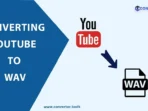In a blended contact center, agents can take incoming calls and make outgoing calls as well.
That’s different from an inbound contact center which focuses on incoming calls, or an outbound contact center which focuses on outgoing calls.
The blend has its advantages, many of which can improve customer satisfaction. For instance, while inbound contact centers wait for the customer to ask for support, a blended contact center can schedule outbound calls to check in with customers.
Why a blended contact center may be the best option for you
It may look like hard work, but creating a blended contact center is often the best option for any company. As you’ll soon appreciate, it’s all worth it.
We’ve already mentioned customer happiness. Maintaining the morale of your customers keeps them loyal for a long time. As a result, you can achieve better customer retention that keeps your company profitable.
A blended contact center has fewer customers calling in either of the single-direction contact centers. With your agents making outbound calls, customers are less likely to call in as frequently as with strictly inbound contact centers.
To achieve these wonderful outcomes, one has to build a blended contact center intentionally…
Let’s look at that next.
How to build a blended contact center
You can build a blended outbound contact center by following the 3 easy steps we’ve outlined below.
- Create a CRM strategy
- Incorporate NLU into your IVR for automation and high productivity
- Train your agents to attain low Average Handling Times
You won’t achieve a lot if you’re not using a CRM to collect customer information. Creating a CRM strategy should leave you with a good platform that serves as a central data silo. Integrating your CRM and call tools streamlines the customer information your agents will need when making outbound calls.
Natural Language Understanding enables your IVR system to ‘comprehend’ customer concerns. With automation, a customer can just say what they’re calling for and the system automatically schedules events. Such events can be the resolution of accounts, or even scheduling an outbound call with an agent at a later time.
You should train your agents to direct conversations toward desired outcomes. Well-trained agents can serve customers in shorter call sessions than fresh/lesser skilled agents. In the long run, this translates into cost savings while other metrics improve as well.
Blended contact center metrics to monitor
Several metrics should attract your attention when running a blended contact center. Let’s examine a few:
First contact resolution
This is the number of calls that get resolved (closed) at first contact. Highly skilled agents thrive at this. If your blended contact center is not getting a satisfactory amount of first call closes, it’s a sign that you need to train the agents some more. Your contact center should aim at achieving a better FCR.
Average handling time
This metric records the time spent by an agent when interacting with a caller overlapping into the after-call work as well. Long handling times are undesirable as they cause long customer service queues. One way to slash AHT is to ensure that customer information is readily available to the agent as soon as your call tools recognize the caller. A feat you can achieve with CRM integration.
Calls per agent
You may also want to measure how many calls each agent is handling for a set period. Automatically routing calls to available agents is an excellent way to shorten customer service queues. It also balances the load and reduces strain on your agents when too many calls are coming in.







